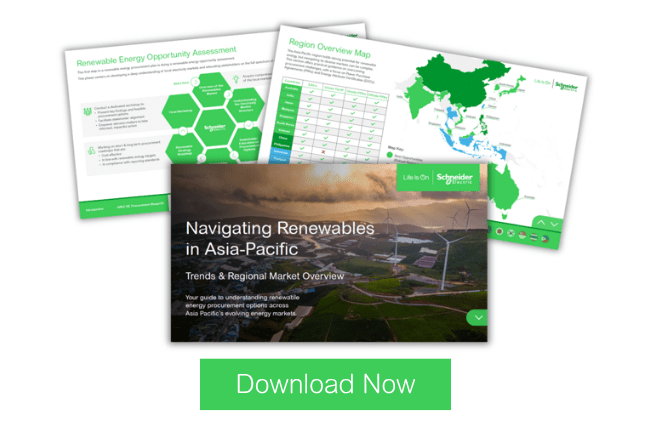India’s Renewable Energy Revolution: A Market of Promise and Paradox
 India is at the forefront of a global energy transformation. With a population of over 1.4 billion and a rapidly growing economy, the country faces a dual challenge: meeting rising energy demand while decarbonizing its grid. The renewable energy sector is central to this transition, and it’s evolving fast.
India is at the forefront of a global energy transformation. With a population of over 1.4 billion and a rapidly growing economy, the country faces a dual challenge: meeting rising energy demand while decarbonizing its grid. The renewable energy sector is central to this transition, and it’s evolving fast.
For energy leaders, sustainability strategists, and investors, India offers one of the most dynamic and complex renewable energy markets in the world. The opportunity is vast, but success requires navigating a landscape shaped by regional disparities, regulatory intricacies, and infrastructure constraints.
India’s Energy Landscape: A Snapshot
India’s energy mix is still dominated by coal, which accounted for 71% of generation in 2024. However, the tide is turning:
- Solar and wind are projected to grow from 12% to 21% of the generation mix by 2030.
- The total installed capacity reached 496GW as of August 2025.
- Commercial and industrial electricity prices range from $66 to $133/MWh, depending on the state.
- The average spot market clearing price on the Indian Energy Exchange (IEX) was $50.55/MWh in 2024.
India’s wholesale market is partially deregulated, while the retail market remains regulated through state-run Distribution Companies (DISCOMs). This creates a layered and often fragmented energy ecosystem.
Government Initiatives Fueling the Transition
India’s policy environment is evolving to support renewable energy adoption:
- Renewable Portfolio Standard (RPS): Aims to increase non-fossil fuel capacity in alignment with net-zero goals.
- Time-of-Day (ToD) Tariffs: Encourage demand-side management with peak pricing and rebates.
- Banking Policy: Supports off-site renewable procurement and higher RE replacement.
- Group Captive Mechanism: Offers surcharge waivers, enabling significant cost savings.
- Green Energy Open Access: Reduces the minimum threshold for open access from 1 MW to 100 kW, democratizing access to clean energy.
These policies are unlocking new models for energy procurement and enabling more flexible, cost-effective solutions for businesses.
Market Opportunities: A State-by-State Mosaic
India’s renewable energy market is highly regionalized. Each state presents unique opportunities based on grid tariffs, policy openness, and solar/wind potential:
- Group Captive PPAs offer 15–25% savings and are widely available.
- On-Site Solar PPAs can deliver up to 40% savings in high-tariff states.
- Normal PPAs provide 5–10% savings, though availability is limited.
- REC Markets are well-established, offering flexibility for sustainability goals.
- VPPAs are emerging but remain at an early stage.
- Green Tariffs exist but lack transparency in sourcing.
States like Karnataka, Tamil Nadu, and Gujarat offer medium to high savings potential (10–40%), while others present 5–20% savings, primarily through on-site solar.
Challenges: Navigating the Complexity
Despite the promise, India’s renewable energy market presents several challenges:
- Policy Fragmentation
Regulatory inconsistencies across states create uncertainty. Long-term planning is often lacking, and approval processes can be slow and opaque. - Grid Infrastructure and Curtailment Risks
Transmission networks are under strain. Grid congestion and curtailment risks can reduce reliability and profitability, especially in high-generation zones. - High Upfront Costs
While renewables offer long-term savings, initial capital costs remain a barrier—particularly for smaller developers and community-based projects. - Geographical Disparities
Resource availability and infrastructure vary widely. Some regions are rich in solar and wind potential but lack the grid capacity to support large-scale deployment. - Nascent Markets for Advanced Solutions
VPPAs, green hydrogen, and energy storage are promising but underdeveloped. Market maturity, standardization, and awareness are still evolving.
Why This Matters for Energy Leaders
India’s energy transition is not just a domestic imperative—it’s a global opportunity. For companies seeking to align with climate goals, tap into high-growth markets, and drive innovation, India offers a unique blend of scale, urgency, and potential.
But success demands more than ambition. It requires local insight, strategic partnerships, and adaptive models that can navigate the regulatory, financial, and infrastructural complexities of the Indian landscape.
Want the full picture on renewables in Asia Pacific?
.
Start with our latest report, Navigating Renewables in Asia-Pacific, which offers a clear, strategic overview of the region’s dynamic energy landscape - available for download now.
